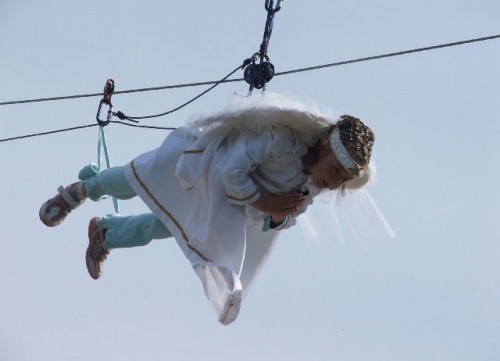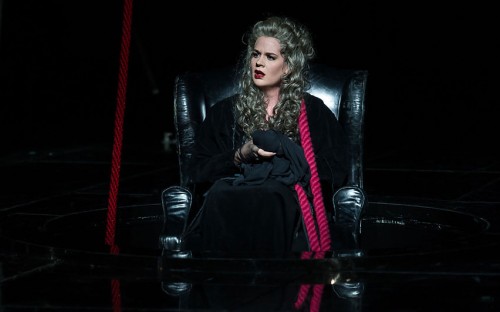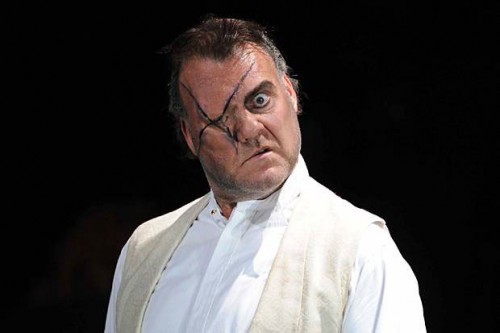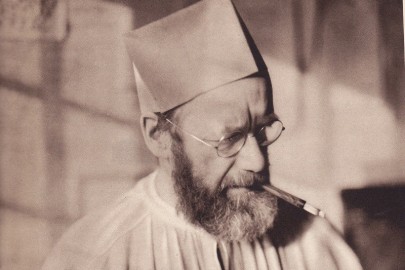
The unexpected pleasures of the technical glitch.
2013 is Richard Wagner’s bicentenary, and I notice there will be a concert performances of several of his operas at the Proms in July, including a complete Ring cycle.
I’ve seen concert performances of Wagner before and they are exhilarating, effective, moving, what you will; but in the end they lack that properly Wagnerian ingredient, the inevitable technical glitch.
Last year I attended the Ring cycle at Covent Garden, and in scene 4 of Das Rheingold, Erda’s chair juddered to a unscripted halt as it descended through the stage. The goddess was forced to hop off and squeeze her way back down the hole between the chair and the edge of the stage; then the ransomed Freia had to make the opposite journey – a bit of a clamber, by the look of it.
It was an enjoyable moment of pantomime in its way, the sort of unfortunate but enlivening technical mishap to which all theatre is heir but which in Wagner is always lurking in the wings, often quite literally: my brother was present at a performance of Parsifal in which, at the point that the hero semi-miraculously catches Klingsor’s spear, the dimmed lights came on prematurely to reveal him groping for the weapon in the curtains.
Wagner had a childish and not-unsympathetic gusto for big effects. His theatrical imagination, in contrast to his musical or even dramatic imagination, was one of wonders and marvels, of ropes, pulleys, papier-mache dragons, smoke and trapdoors; a contraption-bound stagecraft very much in line, I suppose, with nineteenth century vogues of illusionism and magic, but rooted ultimately in a medieval theatre which had learnt that crude mechanical marvels could happily stand duty for the miraculous.

In 1439 a Russian Orthodox bishop present at the Council of Florence wrote a detailed account of the annual sacra rapresentazione which took place at the Church of the Carmine on the Feast of the Assumption. He took particularly careful note of the mechanics of the performance. Christ, having exited a model of Jerusalem built on and around the rood screen, made his perilous ascent on a rickety cloud which had come down from a tower representing heaven, some eight metres high; over this tower God the Father was suspended with a troupe of dancing angels. The cloud came down roughly half way from heaven on a system of cables and pulleys which seems to have worked not unlike a modern elevator, and Christ rose to meet it by the same means. The Russian notes that there were seven cables, and it all worked very smoothly with very little juddering.
But there was no doubt considerable room for mishap. The whole assemblage must have teetered invitingly on the edge of catastrophe, especially given that the same machinery was wheeled out year after year for a hundred and more years. I like to think there was a rich and hilarious folklore handed down through the generations, about angels pitching down from the roof or catching their wings on fire on one of the many hundred lanterns of the empyrean, about the risen Christ giving himself rope burn sliding down the cables or getting his smock caught in the pulleys.
And so the theatre was in Wagner’s day and remains an ancient and gouty art form; its marvels creak at the joints. Covent Garden is now blessed with the most extensive mechanical arrays. There are wings the size of aircraft hangers, revolving stages, trapdoors (inevitably), pyrotechnical explosions (and on night we saw Die Walküre, there was considerable trouble getting Loge’s fires started; it started up in the end with a belch like an old gas stove).Wagner’s theatrical effects, you would think, would by now have been perfected. But this is not the case. It seems that no matter how advanced the mechanical apparatus, all it can ever do is elicit something between a snigger and a gasp. We are never going to be scared of the dragon, or mesmerised by the floating mermaids, just as, I am sure, by the early sixteenth century when the sacre rapresentazioni fell into desuetude, the populace were no more convinced than they ever had been that they had witnessed a miracle: we are asked only to marvel at the fact of it, register it, or enjoy it, emblematically; not be fooled or convinced by it.











Of course the Metropolitan Opera in New York has been living up to the grand Wagnerian tradition in its most recent productions.
Ah yes, so I see. – http://www.huffingtonpost.com/2013/04/08/met-opera-ring-cycle-stage-problems-interrupt-performance-das-rheingold_n_3039369.html
There is much merit in das konzert version, in those lazy hazy days of the Edinurgh festival with added Charles Mackerras in his absolute prime, the Usher Hall unfettled and not yet contaminated by the reptilian RBS and their parasitic punters, Mackerras the consummate Mozartian, aided and abetted by a splendid cast including the delectable Felicity Lott, although there was that Giovanni when the role of dirty Don was sung by a six foot two startlingly blonde Swede, Bo Skovhus. Those were the days of faxing in the ticket request and getting front circle, no worries.
Here be La Contessa d`Almaviva, Pamina, Fiordiligi, Donna Elvira, oh, stop, stop, the memories. Felicity, as we all know, sported the most splendid assets and frequently give ’em an airing, the most exquisite performances twinned with the most splendid cleavage, so splendid that a friend, who preferred the stalls, claimed that one night Tam Dalyell, sitting in front and therefore the assets were, like a Swiss eave, overhanging the poor man, this was too much for Tam who turned purple and had to be revived.
There is an air of expectation throughout the Bundesrepublik, many Euros are pouring forth from the RW gig. The son of a friend is currently guiding in the siebengebirgsmuseum in Königswinter, at the foot of the Drachenfels, the castle has, according to some, a strong association with Siegfried, according to others the old lad was resident in Xanten, on the Dutch border. My Norwegian friends say that this is a load of Lutefisk. Friends son reports that recently a coach load of Xantenites arrived and took issue with the, in their opinion, bogus claim, a heated krautfest followed ending with the usual bunch of shit-faced Germans staring at each other.
I doff my hat to any person who can sit through the entire cycle in a four week period, man, that’s awesome, I once did the last three in a twelve month period, ending in Bayreuth, the dragon’s den, sitting behind what appeared to be Herr Flick and Helga, minus the double breasted suit and suspender belt. I was well knackered.
The experience, dramatic though it was, pales into insignificance compared with that of the mother of an old German colleague, she had worked at the Berlin Opera and was there, in the final days at the concert that concluded with the last act of Götterdämmerung, the front stalls full of Onkel Addie’s lads.
Seem to have fired a number of contiguous neurons there.
I saw Lott at CG once singing the Contessa. Can’t say I remember the cleavage, angle of approach is highly variable in an opera house, as Tam Dalyell can probably attest.
I remember reading in Speer’s book, I think, that most of the Nazi elite found Wagner crashingly dull and only put up with it for the politics. That could have been Speer’s snobbery, of course. However, there probably wasn’t a dry eye in the house (or whatever the Nazi equivalent of that might be) as Ring and Reich started to converge unnecessarily on immolation.
Wagner is of course the inspiration behind a lot of bonkers heavy metal imigary – gleefully sent up in Spinal Tap…
Never seen the Ring Cycle but I always imagine it looking (and creaking) rather like the 1980s Flash Gordon. To give you an idea of what I mean, here’s a shot of Brian Blessed:
http://www.standard.co.uk/news/brian-blesseds-off-in-rage-over-crap-flash-gordon-film-6542373.html